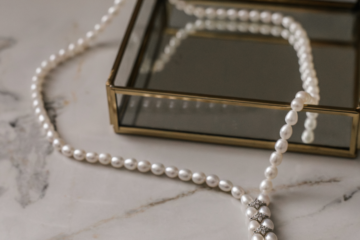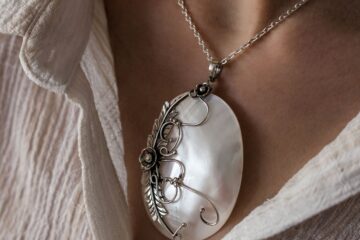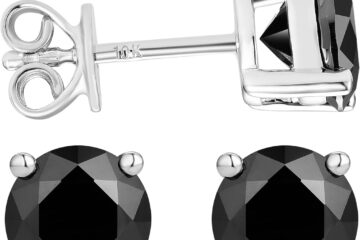Yes, Black freshwater pearls natural and are produced by mussels found in freshwater bodies. These pearls have a unique and elegant appearance, making them sought after in the jewelry industry.
Black freshwater pearls are known for their impressive luster and iridescent shades, adding a touch of sophistication to any jewelry piece. They are formed when a foreign substance enters the mussel, leading to the secretion of nacre layers that eventually develop into a pearl.
Black freshwater pearls come in various sizes and shapes, and their deep black color is a popular choice for those looking for a distinctive and luxurious touch in their accessories.
Formation Process
Black freshwater pearls are a captivating choice for jewelry enthusiasts. Their deep dark hue adds a touch of sophistication to any piece, making them highly sought after. However, there is often confusion surrounding whether these pearls are natural or cultured.
In this article, we will explore the formation process of black freshwater pearls, shedding light on their origin and addressing the question of their natural or cultured status.
Natural Formation
Natural formation of black freshwater pearls occurs in some of the most picturesque bodies of water. These pearls are formed when a foreign object, such as a piece of shell or a parasite, enters the soft tissue of a mollusk.
The mollusk responds to this intrusion by secreting layers of nacre, which gradually coat the irritant and form a pearl. Over time, these layers develop into a lustrous black pearl.
The natural formation of black freshwater pearls is a fascinating process that takes place entirely within the pearls’ mussel. It is a testament to the miraculous abilities of nature, showcasing the innate beauty produced by the symbiotic relationship between a living organism and its environment.
Cultured Formation
While natural black freshwater pearls are a rare find, cultured black pearls are more readily available in the market. Cultured pearls are formed through a similar process as natural pearls, with one key difference. In the case of cultured pearls, a human intervention is made to stimulate the pearl-forming process.
In the cultivation process, skilled pearl farmers insert small pieces of mantle tissue from a donor mollusk into a host mollusk. This tissue acts as a catalyst, prompting the host mollusk to produce layers of nacre around it.
This gradual accumulation of nacre results in the formation of a cultured pearl. With careful management and nurturing, pearl farmers can produce beautiful black freshwater pearls through this cultured formation method.
| Natural Formation | Cultured Formation | |
|---|---|---|
| Origin | The pearl formation occurs spontaneously within the mollusk. | Pearls are formed through human intervention in a controlled environment. |
| Occurrence | Rare | More readily available |
| Process | A foreign object enters the mollusk, and nacre layers are secreted to form a pearl. | Small pieces of donor mollusk tissue are inserted into a host mollusk to stimulate nacre production. |
Understanding the differences between natural formation and cultured formation is crucial for making an informed choice when purchasing black freshwater pearls. Each type possesses its unique characteristics and allure.
Whether you prefer the exceptional rarity of natural black freshwater pearls or the more accessible beauty of cultured black pearls, both options offer a touch of elegance to any jewelry collection.
Characteristics
Black freshwater pearls possess unique characteristics that set them apart from other types of pearls. From color variations to surface quality, these pearls exhibit distinct features that make them highly coveted in the world of jewelry.
Color Variations
Black freshwater pearls come in a variety of hues, ranging from deep ebony to metallic shades like gunmetal and charcoal. The color variations are influenced by the mussel species and environment they are grown in, resulting in a stunning array of colors to choose from.
Surface Quality
The surface quality of black freshwater pearls plays a crucial role in determining their value and visual appeal. High-quality pearls boast a smooth surface with a lustrous sheen, while lower-quality pearls may exhibit blemishes or irregularities. When selecting black freshwater pearls, it’s essential to inspect the surface for imperfections to ensure you’re getting a premium product.
Value And Rarity
Black freshwater pearls are highly sought after due to their rarity and unique beauty.
Comparison To Other Pearls
Black freshwater pearls differ from other pearls in their deep, rich color and natural appearance.
Factors Affecting Value
- Natural beauty: Their natural color and luster increase their value.
- Rarity: Due to their scarcity, black freshwater pearls are considered valuable.
- Size and shape: Larger, rounder pearls command higher prices.
- Surface quality: Fewer blemishes equate to higher value.
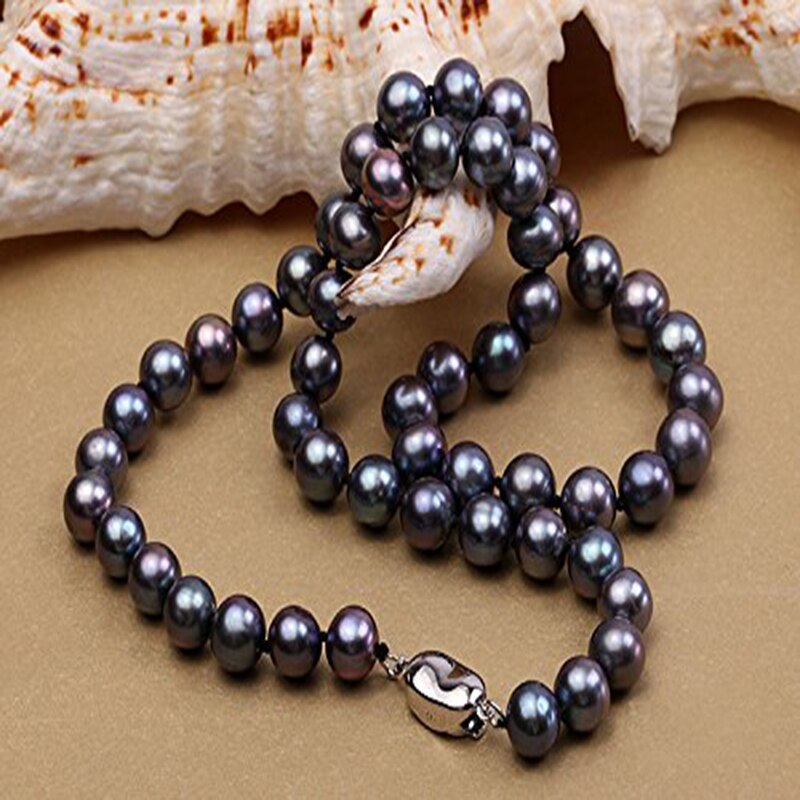
Credit: 100sterling.com
Popular Uses
Black freshwater pearls are naturally occurring and harvested from mussels. These lustrous gems are popularly used in jewelry making, adding a touch of elegance to necklaces, bracelets, and earrings. Their unique color and organic origin make them a sought-after choice for those seeking a distinctive and natural look.
Black freshwater pearls are prized for their unique beauty and versatility. Their dark, lustrous appearance adds an elegant touch to a variety of accessories, making them popular in jewelry making and highly regarded for their cultural significance. Let’s explore these uses further:
Jewelry Making
Black freshwater pearls are widely used in jewelry making due to their stunning visual appeal. Their rich, deep color and smooth texture make them a favorite choice for creating elegant and sophisticated pieces. Whether set in silver or gold, black freshwater pearls add a touch of luxury to necklaces, earrings, bracelets, and even rings.
Cultural Significance
Black freshwater pearls hold great cultural significance in various societies and traditions. In many cultures, they symbolize wisdom, resilience, and protection. They are often used in ceremonial jewelry and heirloom pieces, passing down stories and values from generation to generation. These pearls are treasured not only for their physical beauty but also for the cultural and emotional value they carry.
Identification
When it comes to identifying black freshwater pearls, distinguishing between natural and cultured pearls is essential. Additionally, certification and authentication play a crucial role in ensuring the genuineness of these valuable gems.
Distinguishing Natural From Cultured
Natural black freshwater pearls are formed inside mollusks in freshwater bodies like lakes and rivers. Their growth process is organic, without human intervention, which results in slight irregularities in shape and color, making them unique.
On the other hand, cultured pearls are produced through a process where a foreign substance is inserted into the mollusk, stimulating pearl growth. This results in more uniform shapes and colors. Understanding these differences is key to identifying natural black freshwater pearls.
Certification And Authentication
When looking to authenticate black freshwater pearls, certification by reputable gemological laboratories is crucial. Organizations like the Gemological Institute of America (GIA) and the International Gemological Institute (IGI) provide certifications that guarantee the authenticity of pearls.
These certifications detail essential characteristics such as size, shape, luster, and surface quality. Therefore, always ensure that pearls are accompanied by reliable certification to authenticate their natural origin.

Credit: www.amazon.com
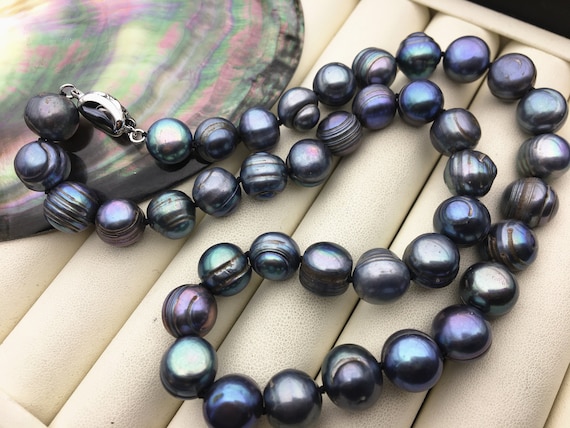
Credit: www.etsy.com
Frequently Asked Questions On Are Black Freshwater Pearls Natural
Are Black Freshwater Pearls Natural?
Yes, black freshwater pearls are natural and are cultured in freshwater mussels.
How Are Black Freshwater Pearls Formed?
Black freshwater pearls are formed when a foreign substance is introduced into the mussel, causing it to produce layers of nacre.
What Is The Value Of Black Freshwater Pearls?
The value of black freshwater pearls is determined by their size, shape, luster, surface quality, and color.
How Do I Care For Black Freshwater Pearls?
To care for black freshwater pearls, avoid exposing them to chemicals, including perfume and hairspray, and wipe them with a soft cloth after wearing them.
Conclusion
To summarize, black freshwater pearls are indeed natural gemstones formed through a fascinating process in mollusks. Their unique coloration adds a touch of elegance and mystique to jewelry creations.
Whether you’re a pearl enthusiast or an admirer of their undeniable beauty, understanding the natural origins of black freshwater pearls enhances their allure. So go ahead and indulge in the timeless charm of these remarkable treasures from the depths of freshwater rivers and lakes.

